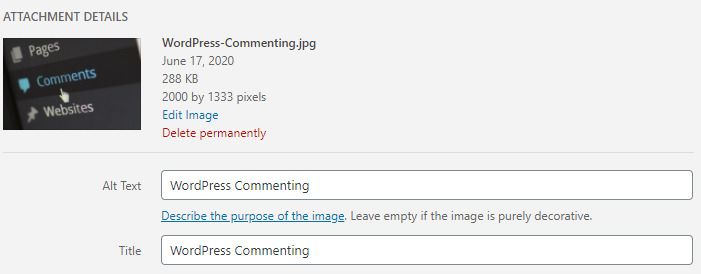Last Updated on May 18, 2021 by Sunny Staff
The U.S. SEO (search engine optimization) market is estimated to be worth about $80 billion. And any business with a successful website knows the importance of having a robust SEO strategy to increase their website traffic and drive more sales.
You could have the most beautiful website on the internet, but if you don’t have a solid SEO strategy, not many will see it.
So, how can you create a winning SEO strategy that will help you to climb the SERP (search engine results page) rankings and gain more traffic? When you’re first starting out with SEO, it can be difficult to learn how to create your strategy.
Thankfully, we’ve created this step by step guide to teach you the basics of SEO. Keep on reading to learn more, so you can draw in more customers and make more sales!
What is SEO?
You know by now that SEO stands for search engine optimization, which is the practice of optimizing your website’s content so that it will show up on the first page of the search engine results page (SERP). While “optimizing your website” sounds a bit technical (and there’s certainly a technical side to it), in practice, Google just wants you to make your content for users, not for search engines. In other words, provide your users with high-quality, relevant content and Google will reward you with better rankings.
There is a popular and funny phrase used in the SEO industry – “the best place to hide a dead body is on page two of Google.” This is because between 75% and 90% of web searchers do not go past the first page on Google.
When it comes to online searches, there is you (your website), the searcher (potential visitors), and the search engine (Google). SEO aims to increase your website traffic by ranking high on the results page for search terms relevant to your business. Traffic from your SEO efforts is referred to as “organic” – it is a natural result of providing high-quality and relevant content for users.
The more traffic you draw to your website, the more Google will recognize you as a website with quality content that viewers like to read. Eventually, they will reward your website with high domain authority, making it easier to rank higher overall.
How SEO Works
To know how you can optimize your content, you must know how the SE part of SEO works, from the search engine’s perspective.
When we speak about search engines, we refer to Google because they account for over 92% of all online searches. Bing and Yahoo account for less than 5% combined.
Here’s how it works: Google has automated “crawlers” that scan all the content on every website on the internet, then indexes the information. When a user performs a search, Google’s algorithm scans the index and matches the online data with your search.
If your site is “optimized” for search engines (see more below), then Google can easily understand your site’s content and evaluate its quality.
Good and Bad SEO
There is a dark side to the SEO world, which is called black hat marketing. Black hat marketing refers to tactics that are not approved by Google, and if you’re caught using them, Google will penalize your site and you’ll likely see your rankings tank.
Black hat SEO tactics include:
- Duplicating content with multiple websites
- Plagiarizing or copying other website’s content, otherwise knowing as Article Spinning
- Keyword stuffing
- Paying for links
- Cloaking
- Invisible text (also keyword stuffing)
- Spamming comments
Here’s a comprehensive list of Google’s quality guidelines.
So why would anyone use black hat tactics? We’ll because in many cases, you can get results pretty quickly. While speeding up the SEO process sounds tempting to some, it is unethical and definitely not worth the risk. You want to avoid using any of the above black hat tactics, which also means that you must interview your SEO agency and ensure they will not be using them either. A good WordPress management company would never use black hat SEO tactics.
How to Optimize your Content Properly
Now that you know what SEO is and how to avoid the black hat tactics, you now need to learn how to optimize your content. While many people believe that SEO is all about keywords, it is much more detailed than that.
On-Page SEO: Keyword Implementation
Keywords are the bread and butter for any successful SEO strategy. Do your research and find both short and long-tailed keywords to help gain more traffic to your website. The areas of focus for keywords are:
- The first paragraph of your content
- The main title
- A header within the article
- In conclusion
- Naturally sprinkled within the content body
- In the image
- Meta description
- In the URL/slug
Inbound Links
Inbound links or “backlinks” are links from another website back to your site. When other sites, especially high-quality sites, link to your site, Google sees that as an indication that your site is providing useful content. Backlinks are one of the most important parts of an SEO strategy.
So how to get backlinks? From Google, “The best way to get other sites to create high-quality, relevant links to yours is to create unique, relevant content that can naturally gain popularity in the Internet community. Creating good content pays off: Links are usually editorial votes given by choice, and the more useful content you have, the greater the chances someone else will find that content valuable to their readers and link to it.”
Outbound Links
So if inbound links are links to your site, outbound links are obviously links from your website to another site. Outbound links are useful to add additional context to your content or to expand upon a topic that is beyond the scope of your content.
SEO experts disagree as to how much, if at all, outbound links affect your SEO (they certainly help the receiving website). However, most agree that they help the SEO ecosystem in general, by helping Google connect relevant content across the web.
Links to and from your site are part of “off-page” SEO. Off-page is just another way of saying external.
If you’d like to find out more, here is an outbound link to SEMRush!
Quality Content
Your content is super important for your SEO success; it must be easy to read, relevant, and published regularly. Poorly written content yields low user engagement, which signals to Google that your content quality is poor, which results in lower SERP results. At the end of the day, Google wants to provide its users with high-quality and relevant content. This one of their basic principles. Design your website and its content for users, not search engines!
Image Optimization
Page speed is important to the user experience, and therefore, it’s important to Google. A big part of image optimization is using the correct file type as well as the correct size. You want an image that displays well on all devices but is not so large as to slow down your site.
You also need to optimize the image name. Name the image using one of the relevant keywords and make sure the image corresponds to the keyword. Also, add relative keywords to the ALT tag and descriptions.

Learn More About Creating a Successful SEO Strategy
Designing and implementing an effective SEO strategy takes time and effort. And as with everything else related to running your business, you’re going to want to measure and track your progress. You can do this by setting up Google Search Console and Google Analytics. Or by hiring a professional agency to do that part for you (hint – we can help you!). You’ll also want to avoid these common SEO mistakes.
To learn more about SEO and how to optimize your WordPress website, feel free to contact us with any questions – we love to help!



